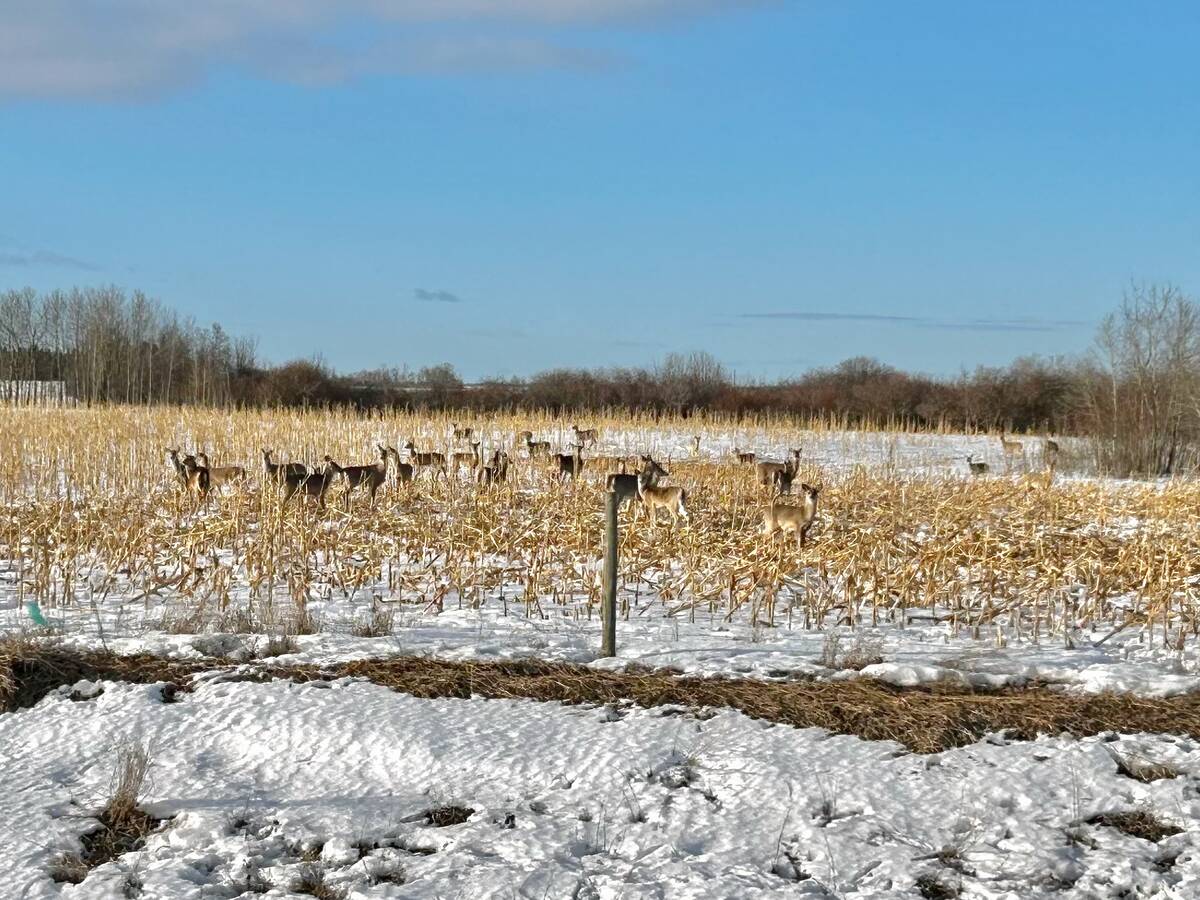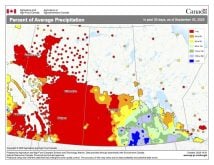If you want to understand why the weather has become so volatile, you’ll need to look up — way up to the Arctic.
Paul Bullock, a retired professor and agrometeorology specialist from the University of Manitoba told the CropConnect conference in Winnipeg that it all starts with polar sea ice.
Climate change is causing the Arctic to warm more quickly than other locations on the globe. That means the extent of sea ice has been falling for decades. And that has a profound impact on how the high-altitude jet stream affects weather.
Read Also

Manitoba launches CWD tracking tool
A newly launched digital dashboard allows hunters to track where chronic wasting disease has been confirmed in Manitoba
“The jet stream is a natural phenomenon,” Bullock told the meeting. “It happens because we have this difference in temperature between the poles and the equator.”
In the summer it’s further north, as warm air comes north. In the winter it’s further south as the cold air intrudes on more southerly locations. And it has ridges and troughs as it oscillates from north to south.
“Under the ridges, you tend to have warm and dry weather,” Bullock said. “Under the troughs, it tends to be cool and wet. Where you’re sitting under the jet stream has a huge impact on the kind of weather you’re going to have.”
As the Arctic has warmed, that’s meant a less pronounced temperature differential between the two extremes. And that’s the key to the greater weather variability in recent years, Bullock said.
“In the pre-industrial era, the differential in temperature between the equator and Arctic was quite steep, and that produced a fairly stable jet stream,” Bullock said.
“Since we’ve warmed the Arctic up, the gradient between the Arctic and equator is much less, which produces a much more wavy jet stream. It moves more slowly, persists longer, then changes abruptly. And this is a very significant change for us in our location.”
For more on this topic, see the February 23 edition of the Manitoba Co-operator.
















